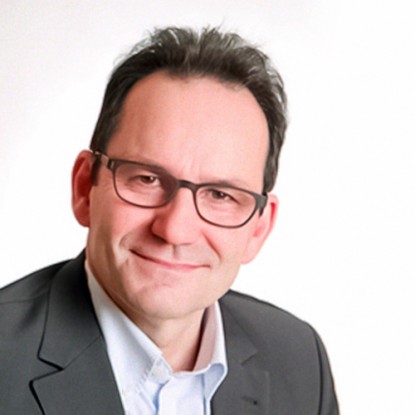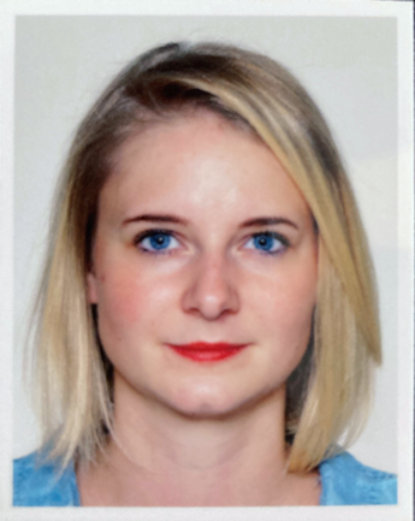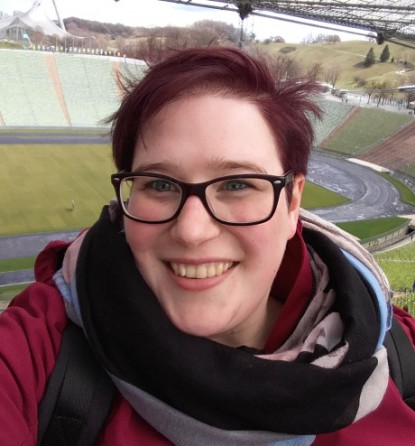Team
| Name | Contact | |
|---|---|---|

Picture: KIT
| Prof. Dr. Olaf Deutschmann | deutschmann@kit.edu +49 721 608-43064 |

| Dr. Sabrina Goßler | sabrina.gossler@kit.edu |

| Dr. Corina Janzer | corina.janzer@kit.edu +4972160842114 |
Motivation
Modeling and numerical simulation of multiphase chemical reactions in complex application areas are among the greatest challenges of our time. Through precise predictions of physicochemical processes in the gas, liquid, and solid phase, operational processes can be optimized and long-term damage prevented. Application-specific models can thus be an aid to increased efficiency and longevity. Especially in the area of combustion and emission control, multiphase flows including chemical reactions are dominant processes in technical processes.
In the first and second funding period, the focus of this subproject was on the exhaust gas aftertreatment of internal engine combustion processes, in particular the reduction of nitrogen oxide emissions by means of selective catalytic reduction (SCR) with the help of ammonia. For this purpose, a reactor model and reaction mechanisms for the numerical simulation of the chemically reacting, multiphase material systems for the provision of the reducing agent ammonia from urea-water solution (AdBlue) and their interactions with solid surfaces in front of and in the SCR catalytic converter were developed.
This reactor model will now be used in the third funding period to describe in detail the functionality and mechanisms of various selected phosphorus-containing flame retardants (P-FRs) in the multiphase combustion process. Such holistic numerical considerations have not been carried out so far, but are of the highest importance to understand the mode of action of P-FRs and can be used in the development and optimization of further P-FRs.
Objectives
After successful investigation of the chemical and physical processes between the dosing of urea-water solution (UWS) and the catalyst in the first funding period, and the extension to the catalyst downstream in the second funding period (see figure 1), the developed model will be adapted in a third funding period to the new guiding example flame safety (see figure 2).
The main objective of this subproject will be the development of multiphase reaction mechanisms of the system fuel / phosphorous-containing flame retardant / carrier polymer with mechanisms based on literature (if available) and also self-developed mechanisms. The development of such multiphase reaction mechanisms is necessary in order to have a thorough understanding of the overall activity and the interaction between the flame retardant and the carrier polymer.
Previous Findings
The focus of this subproject in the first and second funding period was the exhaust gas aftertreatment of internal combustion engines, in particular the reduction of nitrogen oxides with selective catalytic reduction. Therefore, reaction mechanisms were developed for the numerical simulation of the chemical reacting multiphase system for preparation of the reducing agent ammonia from urea-water solution (AdBlue) and the interaction with walls upstream of and in the SCR catalyst (see figure 3). The models can now describe the non-catalytic urea decomposition and by-product formation upstream of the catalyst and the catalytic reaction on the SCR catalyst, as well as their interaction with the SCR reactions, over the whole relevant temperature range with very good agreement with experimental results.
Approach
For the simulations the code DETCHEMMPTR is used, which was developed in the first funding period and expanded in the second one (see figure 4). The new developed functions are written in FORTRAN and coupled to the existing code. It’s a zero-dimensional multiphase batch type reactor model with an arbitrary number of phases and will be therefore, after adaption, ideal for simulations in the field of flame safety. The in-house developed platform CaRMeN is helpful to integrate and compare all numerical and experimental results from this and other subprojects as well as data from literature.
Current Work
The first step in the third funding period will be the adaption auf the actual DETCHEMMPTR model to the new application flame safety. This must be done considering the expected gas and condensed phases (liquid, melted, solid) of the various components. The main focus of this subproject will then be the development of reaction mechanisms for the carrier polymer and the various flame retardants (see figure 5), as well as the coupling of these models with the combustion mechanism of methane.
Cooperations
This subproject makes an important contribution to the modeling of multiphase flows and reactions in the Collaborative Research Center in the guiding example flame safety and acts as an important link between experiment and simulation. The required experimental data on the combustion decomposition products in the gas and the solid phase will be delivered by subproject C08. The results from B04 will also serve to optimize and validate the P-FR submechanisms, because the gas phase chemistry of the PO compounds is examined more closely here. The entire mechanisms will be provided to B06 for the mechanism reduction. In addition, C07 will use these reduced mechanisms in numerical simulations of boundary layer flames to describe the release rate of gaseous products and defines boundary conditions for the numerical simulation on this basis.











